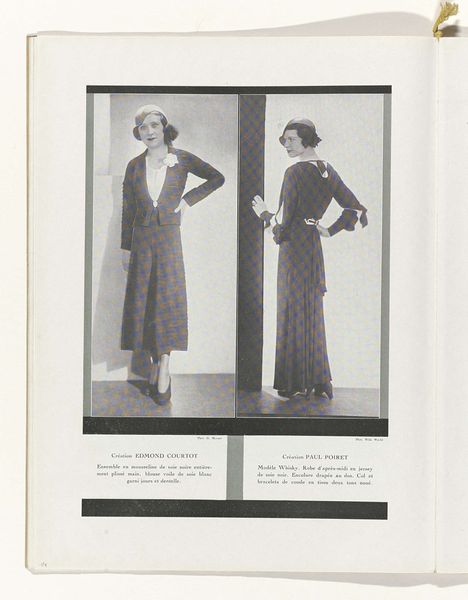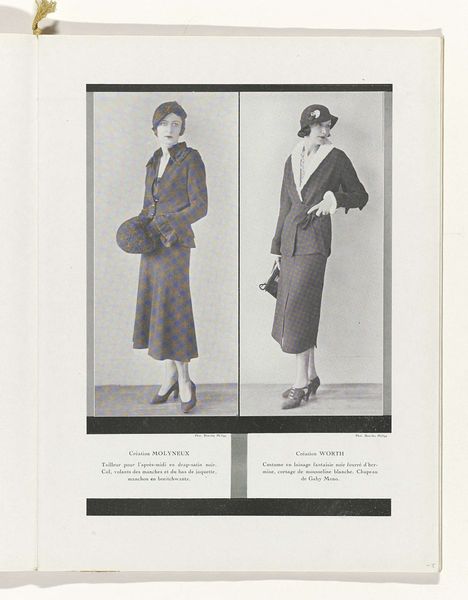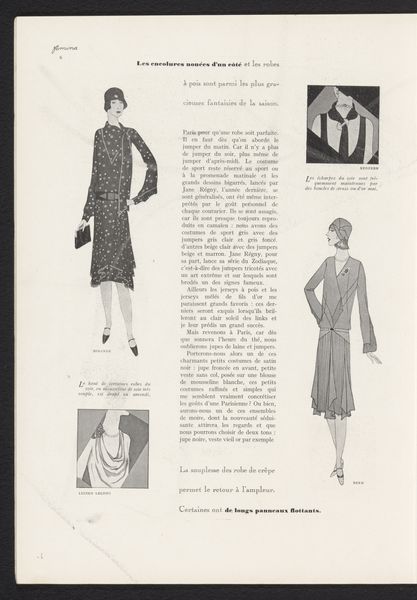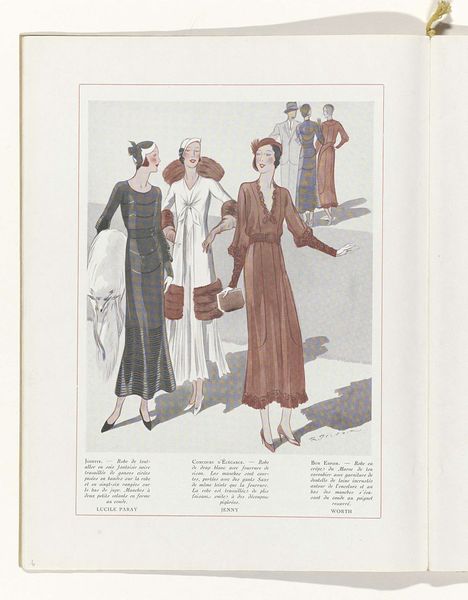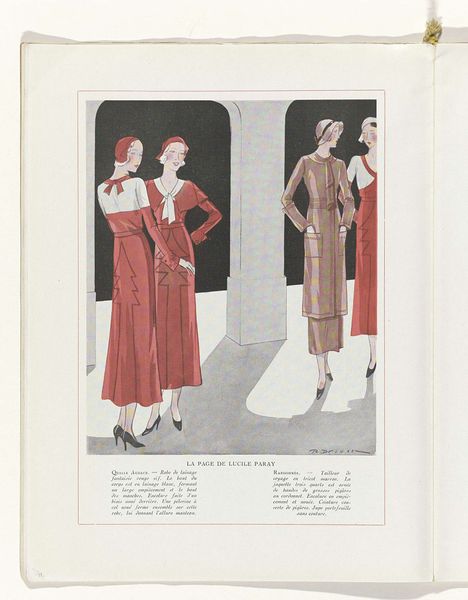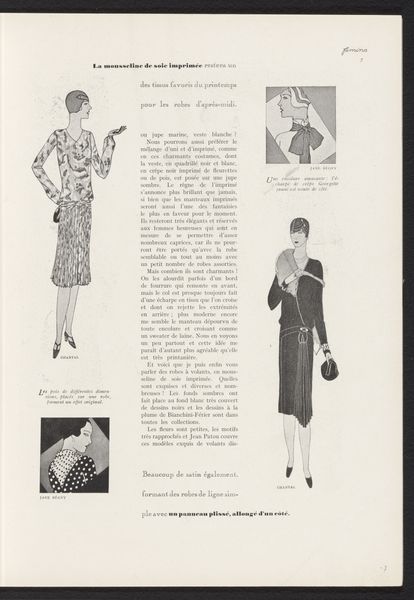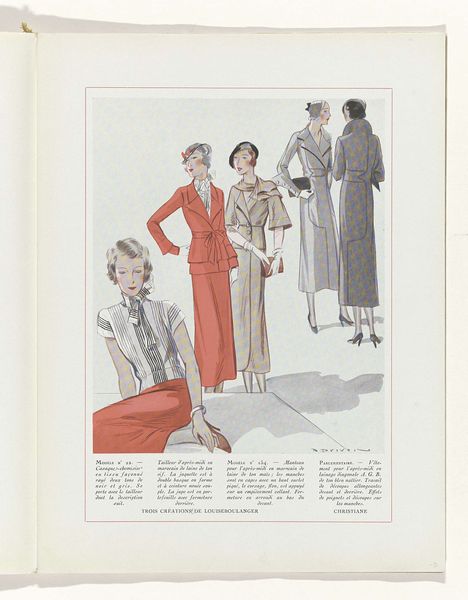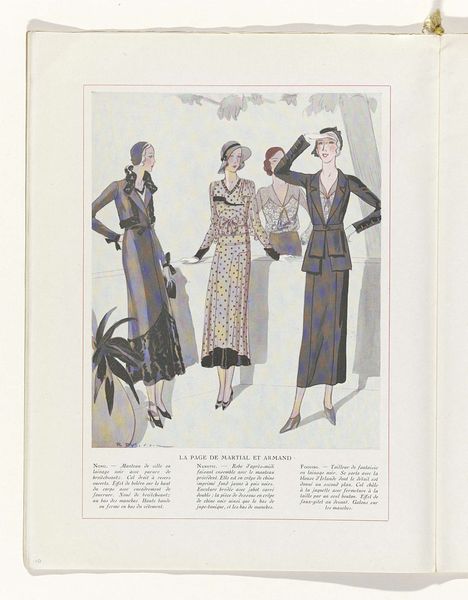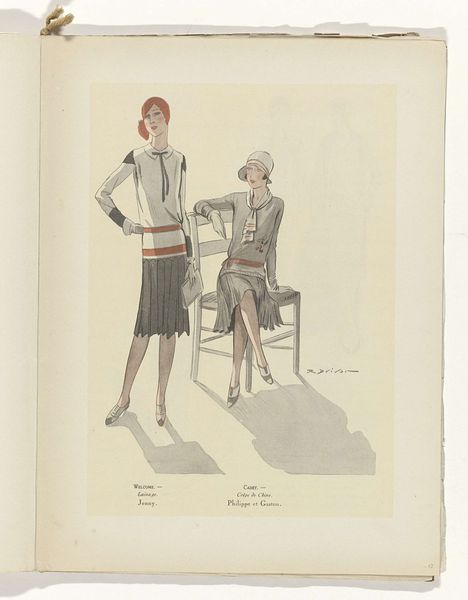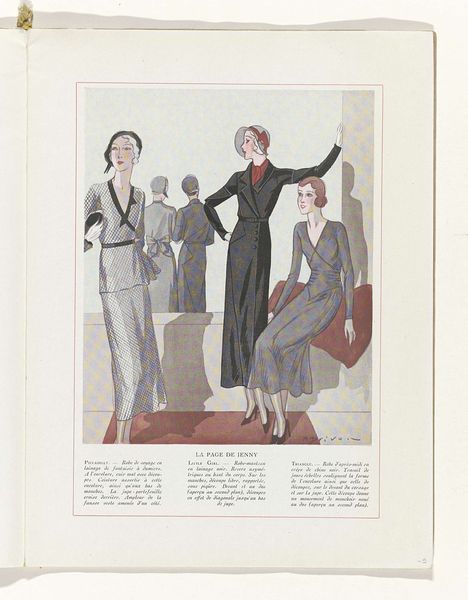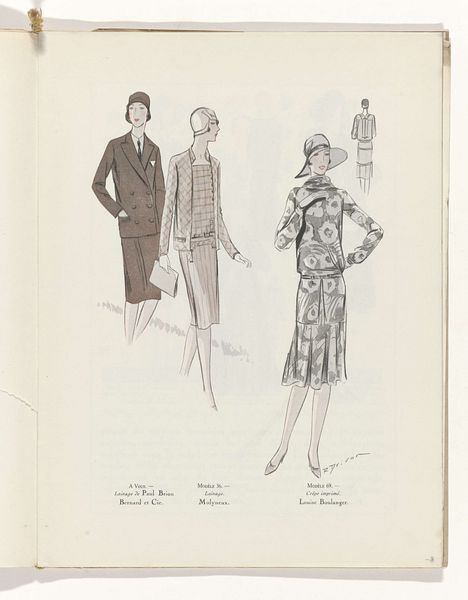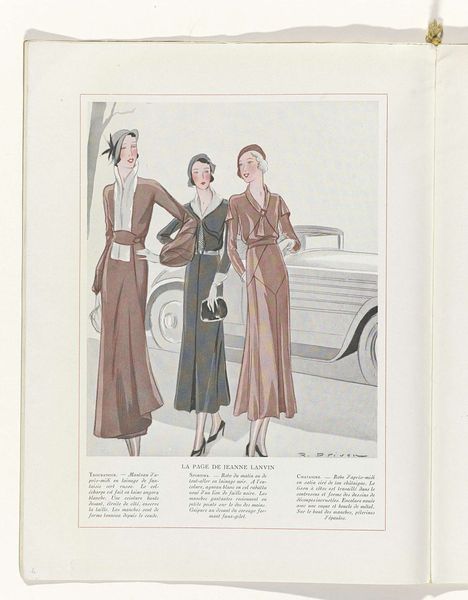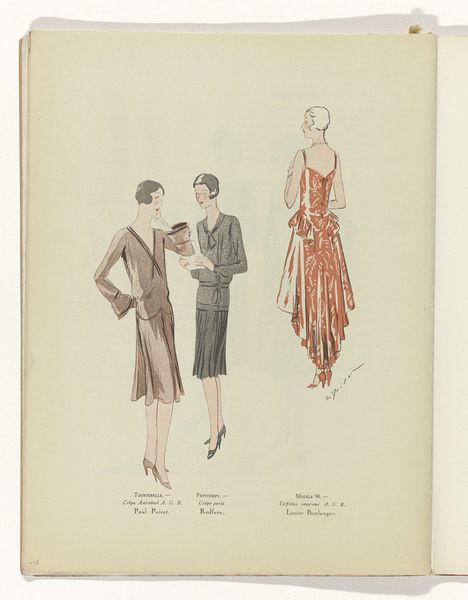
Art - Goût - Beauté, Feuillets de l' élégance féminine, Novembre 1931, No. 135, 12e Année, p. 16 1931
0:00
0:00
print, photography
#
portrait
#
art-deco
# print
#
photography
Dimensions: height 315 mm, width 240 mm
Copyright: Rijks Museum: Open Domain
Curator: This image, titled "Art - Goût - Beauté, Feuillets de l'élégance féminine, Novembre 1931," comes from a fashion magazine printed in November 1931, part of its 12th year of publication. Editor: There's a wistful elegance to it. The grayscale lends a timeless quality, and the composition feels quite balanced with two figures placed side-by-side. Curator: The choice of photography for a fashion magazine reflects a shift toward capturing modern lifestyles and consumer culture in interwar France. The production and distribution of this periodical would have been intimately linked to the textile and fashion industries. The printing press itself and photography were relatively new processes compared to illustration for fashion. Editor: Agreed. Focusing on form, I'm intrigued by the subtle contrasts. On the left, softer lines with what appears to be a flowing dress or suit are juxtaposed against the geometric pleats of the dress on the right. Note also the darker solid blacks highlighting text against the grayscale image. The light and shadow fall across the models’ faces and costumes, drawing the eye. Curator: And beyond aesthetics, these were commodities destined for mass consumption, showcasing modern design principles. This also offered women access to fashion ideals in a time when clothing and self-presentation were forms of social expression, subject to trends driven by capitalism. Editor: True. There's definitely an interplay between the "high art" portraiture style and commercial motives. The textures also read differently. The outfit on the left appears textured, with lace trim while on the right is smoother, likely due to the knit fabric. Curator: We must remember that fashion wasn't just about style. Consider the conditions under which those fabrics were produced, the labor involved, the socio-economic impact of the clothing industry. Editor: Absolutely. These images were carefully composed with geometric symmetry to reflect the Art Deco designs, a semiotic system designed to convey the essence of feminine style and the spirit of a new era. I’ve thoroughly enjoyed teasing out both their formal qualities and also the broader social implications and the economic landscape framing their original production. Curator: It's crucial to view this artwork not as a singular artistic expression but as a byproduct of complex economic processes—a reflection of material production, consumerism, and societal power dynamics. These elements are intricately interwoven into the final visual form that so captivates the eye.
Comments
No comments
Be the first to comment and join the conversation on the ultimate creative platform.
